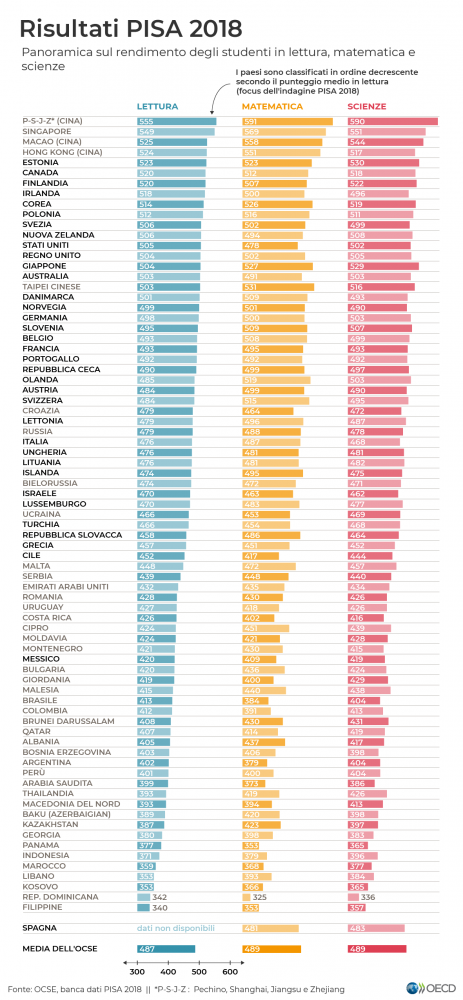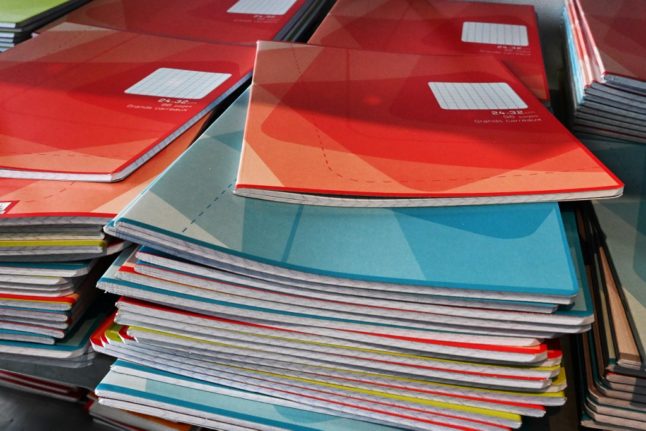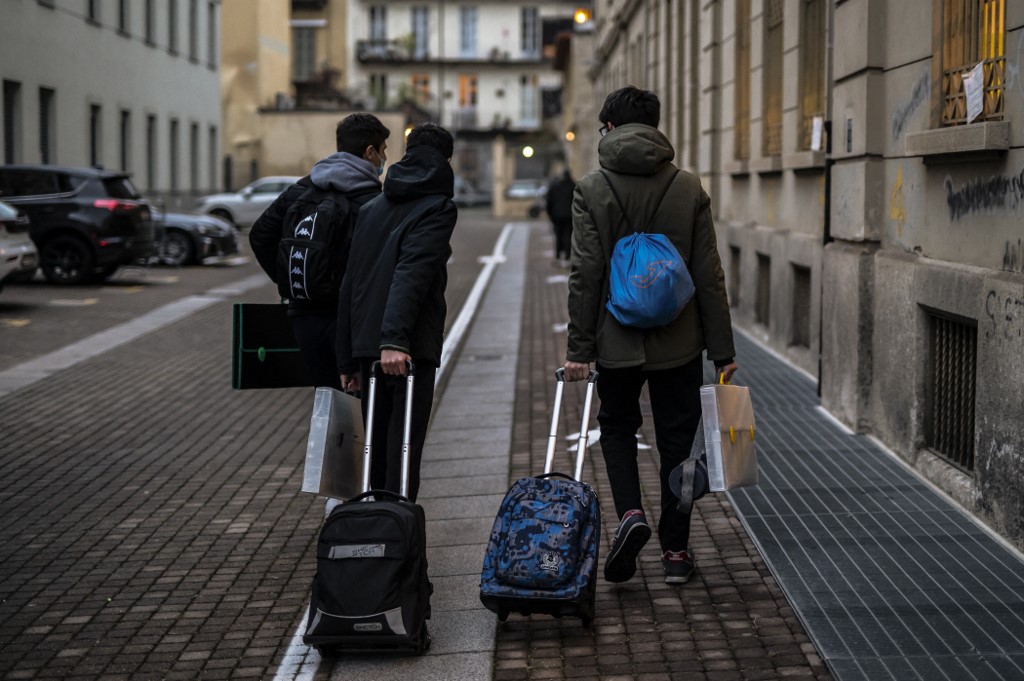The Organization for Economic Cooperation and Development (OECD) published its highly anticipated PISA report for 2018 on Tuesday, comparing the abilities of 15-year-olds from 79 countries.
It was bad news for Italian schools once again, as Italian students were found to perform below the OECD average in all three key subject areas of reading comprehension, mathematics and science.
READ ALSO: Why are Italians the 'worst at speaking English in Europe'?
Italian 15-year-olds received a mean score of 476 in reading comprehension, compared to an OECD average of 487, and 468 in science (average: 489).
Things were better in mathematics: Italian students scored 487, coming just under the OECD average of 489.
What are the main problems?
The most problematic area for Italian students was reading comprehension, the study found.
One of the most worrying findings was that only one in 20 Italian 15 year olds is able to distinguish fact from opinion when reading a text on an unfamiliar topic.
And one in four has difficulty with basic reading comprehension, failing to identify the main idea within a medium-length text.
Things have worsened in the last decade, as the country has dropped ten points when it comes to reading skills since 2009.
The report reveals that Italy is “a country that isn't thinking about the future,” according to Michela Montevecchi, Vice-President of the Education Commission, reports La Repubblica.
“We are losing critical capacity, but our society isn't dealing with it. Our children are less and less able to analyse the complex situations that they will find themselves facing,” she stated.
Giuseppe Massafra, head of CGIL, Italy's teaching union, stated that “the report confirms educational poverty is a national emergency.”
How did Italy compare with other countries?
Most countries in Europe had higher average test scores than Italy, the study found.
In the three areas examined, average scores in Italy were lower than in Belgium, France, Germany, the Netherlands, Poland, Slovenia, Sweden and the United Kingdom.
In reading comprehension, Italy ranked alongside Switzerland, Latvia, Hungary, Lithuania, Iceland and Israel.
Italy's score was similar to that of Portugal and Spain in mathematics, but lower than these two countries in science.

There were marked differences within Italy itself, with schools in the north performing better overall, (average score in the north west: 498, north east: 501), while their peers in southern areas and on Italy's islands are struggling the most, scoring 453 and 439 respectively.
And the study notes that “compared to 15-year-old students in other OECD countries, students in Italy missed out on a greater amount of learning time due to absences and indiscipline in class.”
The effect of social inequality
Italian schools are not helping to address social inequalities, the study noted, as it found most schools were attended by students from the same socio-economic and cultural background.
The study also found that students from disadvantaged backgrounds found it more difficult to imagine attaining a university degree.
Only six out of ten “excellent” students from a “socio-economically disadvantaged background” said they were aiming to get a university degree, compared with nine out of ten of their peers from more privileged backgrounds..
Gender stereotypes don't seem to be changing, either: among students with the best results in mathematics and science, girls were half as likely as boys to imagine themselves having careers as scientists or engineers by the age of 30.
Charity Save the Children commented that the study's findings were a “brutal snapshot of educational poverty in Italy,” La Repubblica reports, saying the report “highlights the crisis in the education system and the inability of the school system to counter and overcome educational inequalities.”
What exactly is the PISA study?
The PISA study is the largest international comparative school performance study, which assesses the extent to which 15-year-old students worldwide have acquired the knowledge and skills essential for their future participation in society.
This time around 600,000 pupils from 79 countries took part.
Since 2000, hundreds of thousands of students aged 15 have been tested every three years in the fields of mathematics, reading and the natural sciences.
This year the main focus was on reading competence. The tests are now carried out primarily on computers, with pupils having to complete various tasks.





 Please whitelist us to continue reading.
Please whitelist us to continue reading.
Member comments